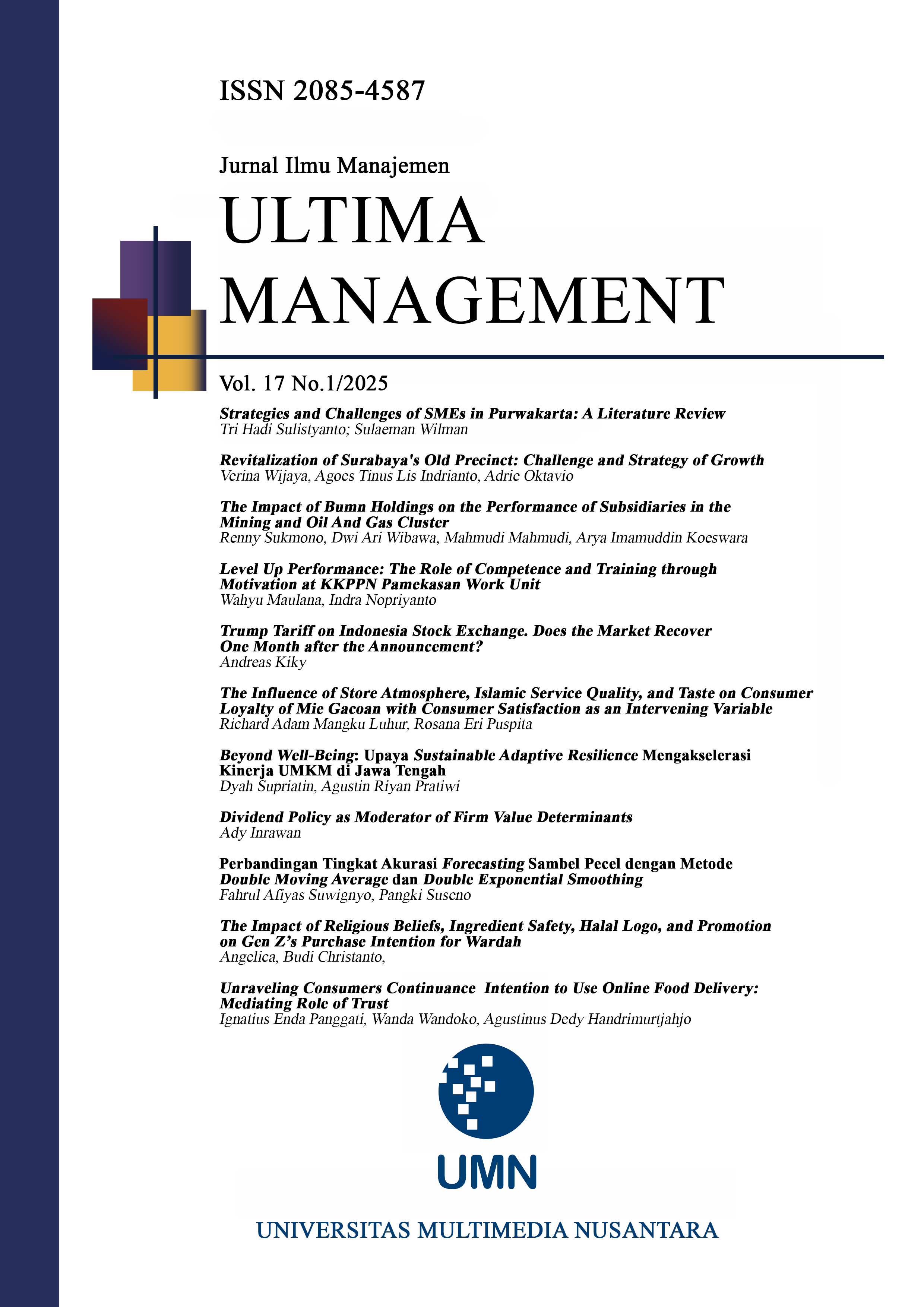RELIGIOUS BELIEFS, INGREDIENT SAFETY, HALAL LOGO, AND PROMOTION IMPACT ON GEN Z’S PURCHASE INTENTION FOR WARDAH
DOI:
https://doi.org/10.31937/manajemen.v17i1.4198Abstract
Abstract- Generation Z represents a promising market segment with distinct preferences for cosmetic products. This study examines the impact of Religious Belief, Ingredient Safety, Halal Logo, and Promotion on the Purchase Intention of Wardah Halal Cosmetics among Generation Z. A quantitative approach with a causal research design was employed, involving 303 Muslim Generation Z women in the Jabodetabek area. Data were analyzed using multiple linear regression, including validity and reliability tests, classical assumption tests, regression equations, coefficient of determination tests, and significance tests (t-test) using IBM SPSS 27. Findings indicate that Ingredient Safety, Halal Logo, and Promotion significantly influence Purchase Intention, whereas Religious Belief does not have a significant effect. Future research should explore alternative variables and broader perspectives on halal cosmetics to enhance theoretical understanding. In conclusion, Wardah's success in attracting Gen Z consumers lies in its product safety, clear halal certification, and effective promotional strategies rather than relying solely on religious alignment.
Keywords: Religious Beliefs; Ingredient Safety; Halal Logo; Promotion; Purchase Intention; Generation Z
Downloads
Downloads
Published
How to Cite
Issue
Section
License
Copyright (c) 2025 Angelica Angelica, Budi Christanto

This work is licensed under a Creative Commons Attribution-ShareAlike 4.0 International License.
Authors retain copyright and grant the journal right of first publication with the work simultaneously licensed under a Creative Commons Attribution-ShareAlike International License (CC-BY-SA 4.0) that allows others to share the work with an acknowledgement of the work's authorship and initial publication in this journal.
Authors are able to enter into separate, additional contractual arrangements for the non-exclusive distribution of the journal's published version of the work (e.g., post it to an institutional repository or publish it in a book), with an acknowledgement of its initial publication in this journal.















